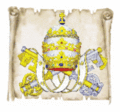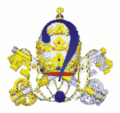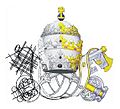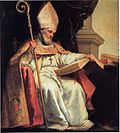Portal:Catholic Church
Introduction The Catholic Church (Latin: Ecclesia Catholica), also known as the Roman Catholic Church, is the largest Christian church, with 1.27 to 1.41 billion baptized Catholics worldwide as of 2025. It is among the world's oldest and largest international institutions and has played a prominent role in the history and development of Western civilization. The Church consists of 24 sui iuris (autonomous) churches, including the Latin Church and 23 Eastern Catholic Churches, which comprise almost 3,500 dioceses and eparchies around the world, each overseen by one or more bishops. The pope, who is the bishop of Rome, is the chief pastor of the church. The core beliefs of Catholicism are found in the Nicene Creed. The Catholic Church teaches that it is the one, holy, catholic and apostolic church founded by Jesus Christ in his Great Commission, that its bishops are the successors of Christ's apostles, and that the pope is the successor of Saint Peter, upon whom primacy was conferred by Jesus Christ. It maintains that it practises the original Christian faith taught by the apostles, preserving the faith infallibly through scripture and sacred tradition as authentically interpreted through the magisterium or teaching office of the church. The Roman Rite and others of the Latin Church, the Eastern Catholic liturgies, and communities and societies such as mendicant orders, enclosed monastic orders, third orders and voluntary charitable lay associations reflect a variety of theological and spiritual emphases in the church. Of its seven sacraments, the Eucharist is the principal one, celebrated liturgically in the Mass. The church teaches that through consecration by a priest, the sacramental bread and wine become the body and blood of Christ. The Virgin Mary is venerated as the Mother of God, and Queen of Heaven; she is honoured in dogmas, such as that of her immaculate conception, perpetual virginity and assumption into heaven, and devotions. Catholic social teaching emphasizes voluntary support for the sick, the poor and the afflicted through the corporal and spiritual works of mercy. The Catholic Church operates tens of thousands of Catholic schools, universities and colleges, hospitals and orphanages around the world, and is the largest non-governmental provider of education and health care in the world. Among its other social services are numerous charitable and humanitarian organizations. (Full article...) Selected article
 The Roman Catholic Archdiocese of Chicago is a particular church of the Roman Catholic Church in the United States. The Archdiocese of Chicago is one of the largest dioceses in the nation by population and comprises Cook and Lake counties, covering 1,411 square miles (3,653 km²) of Illinois. The original Diocese of Chicago was created on November 28, 1842, and was elevated to the status of an archdiocese on September 10, 1880. On September 27, 1908, the Diocese of Rockford was broken off from the Archdiocese, and to create the Diocese of Joliet in Illinois on December 11, 1948, territory was taken from the Peoria, Rockford and Chicago dioceses. The Archbishop of Chicago concurrently serves as the metropolitan bishop of the Ecclesiastical Province of Chicago, whose suffragan bishops are the bishops of Belleville, Joliet, Peoria, Rockford, and Springfield.
Selected image
 Credit: Gian Lorenzo Bernini, self-portrait
Gian Lorenzo Bernini (1598 – 1680) was an Italian artist who worked principally in Rome. He was the leading sculptor of his age and a prominent figure in the emergence of Roman Baroque architecture. He was a successor to Michelangelo as the architect of Saint Peter's Basilica; his design of the Piazza San Pietro in front of the Basilica is one of his most innovative and successful architectural designs. Selected biography
 Pope Benedict XVI (Latin: Benedictus PP. XVI; German Benedikt XVI.; Italian: Benedetto XVI, born Joseph Alois Ratzinger on 16 April 1927) was the 265th Pope, the spiritual head of the Catholic Church, and as such, Sovereign of the Vatican City State, until his resignation was effective, on 28 February 2013. He was elected on 19 April 2005 in a papal conclave, celebrated his papal inauguration mass on 24 April 2005, and took possession of his cathedral, the Basilica of St. John Lateran, on 7 May 2005. Pope Benedict XVI has both German and Vatican citizenship. He succeeded Pope John Paul II, who died on 2 April 2005 (and with whom he had worked before the Sede vacante). Benedict XVI was also the Bishop of Rome. Benedict XVI is a well-known Catholic theologian and a prolific author, a defender of traditional Catholic doctrine and values.
Did you know...

Related portalsFeast Day of June 23
Selected quote
News
SubcategoriesTopics
The Holy Bible:
Particular churches (grouped by liturgical rite):
Things you can do
External resourcesWikiProjectsAssociated WikimediaThe following Wikimedia Foundation sister projects provide more on this subject:
Discover Wikipedia using portals |

































